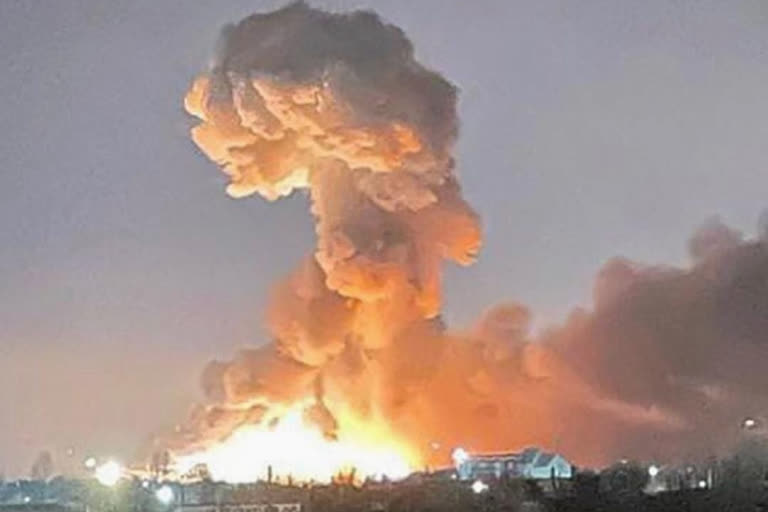New Delhi: Russia has declared war on Ukraine on February 24, 2022, and is executing a plan meticulously prepared and war-games. NATO appears to have over-relied on the potency of its sanctions to deter Putin, which appears to be a major strategic error because it has not worked in the past and does not appear to be working now. Instead, it has emboldened Russian leadership's resolve that NATO will be unable to respond to a quick offensive beyond condemnation, Ukraine's capacity building, and sanctions on Russia.
It has pushed Ukraine to disaster, as its President's loud demand to join NATO was neither acted upon by West, nor provided him any assurance that anyone else would do the heavy lifting or put boots on the ground in Ukraine to fight Russians, despite a massive military force imbalance in Russia's favour.
Decoding Strategic and Military Action of Russia so far
The contours and logic of Russian plans were evident from its posturing over months, President Putin's speeches to the nation and his demands made to Ukraine. The political aim of Russia seems to be to target Ukraine's leadership to give up demand of NATO membership, or else force a regime change, replacing it with a pro-Russian government not propagating NATO membership/agenda.
Strategically, the centre of gravity for the Russian offensive is the minds of Ukraine's leadership and military to surrender to Russia with minimum military actions. This strategic goal cannot be realised without surrounding Kyiv, which is the key strategic objective; as a result, operations to encircle Kyiv and capture adjacent airbases have been launched. After Russia recognised the independence of the Donetsk People's Republic and the Luhansk People's Republic, the liberation of the Donbas region was a foregone conclusion.
The military aim is to demilitarise the Ukrainian military to ensure that Ukraine cannot be used as a springboard by NATO to threaten the security of Russia and isolate Kyiv to facilitate regime change without military interference. To shape the battlefield, the Russian military postured three sides of Ukraine with massive combat superiority, used forces in Belarus to invade from the North to reach Kyiv via shortest route, used its Black Sea fleet and Crimea to blockade Ukraine from the South, and forces in Donbas region to invade from the east and some forces from northeast to expedite consolidation.
The military operations were preceded by cyber-attacks and information warfare. Military operations were launched in a well-planned and professional manner under the banner of 'Special Operations,' beginning with air and missile strikes to neutralise air defence capability, air assets to achieve air superiority, and pulverise military targets, claiming to have destroyed over 70 military targets and installations, including 11 airfields in Ukraine, before ground elements marched in, adding conventional superiority to upgrade its hybrid war.
NATO's Response and Future Options
